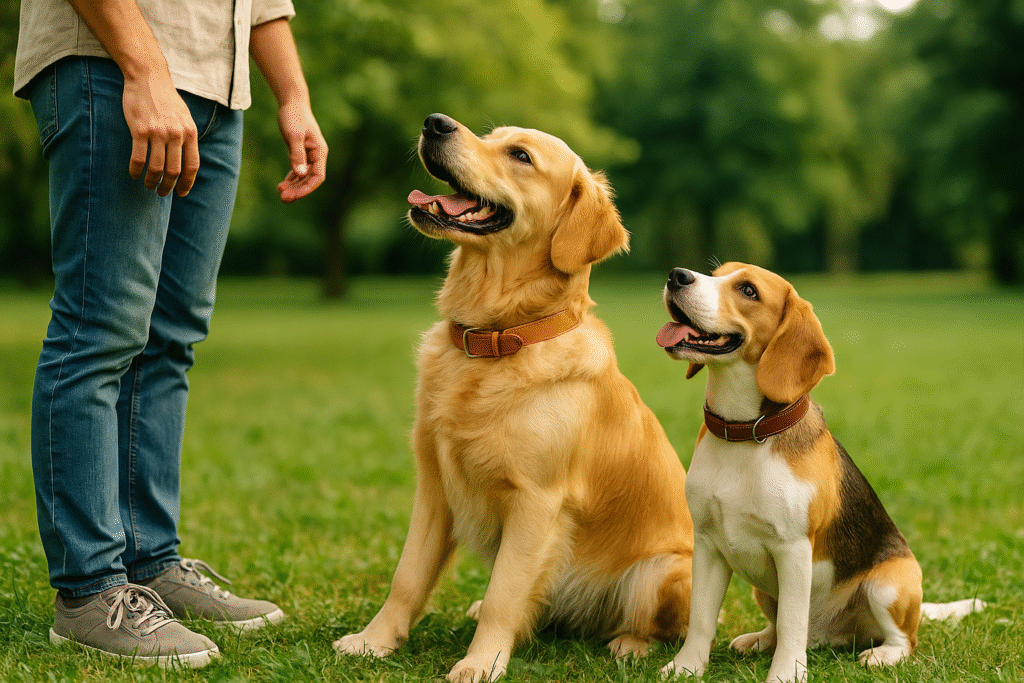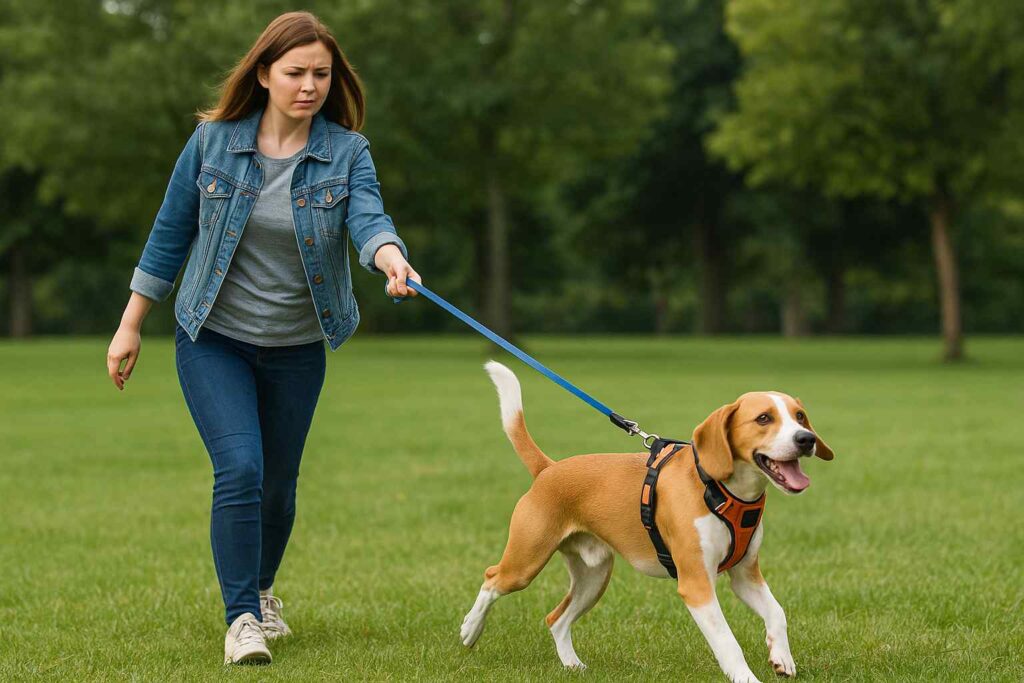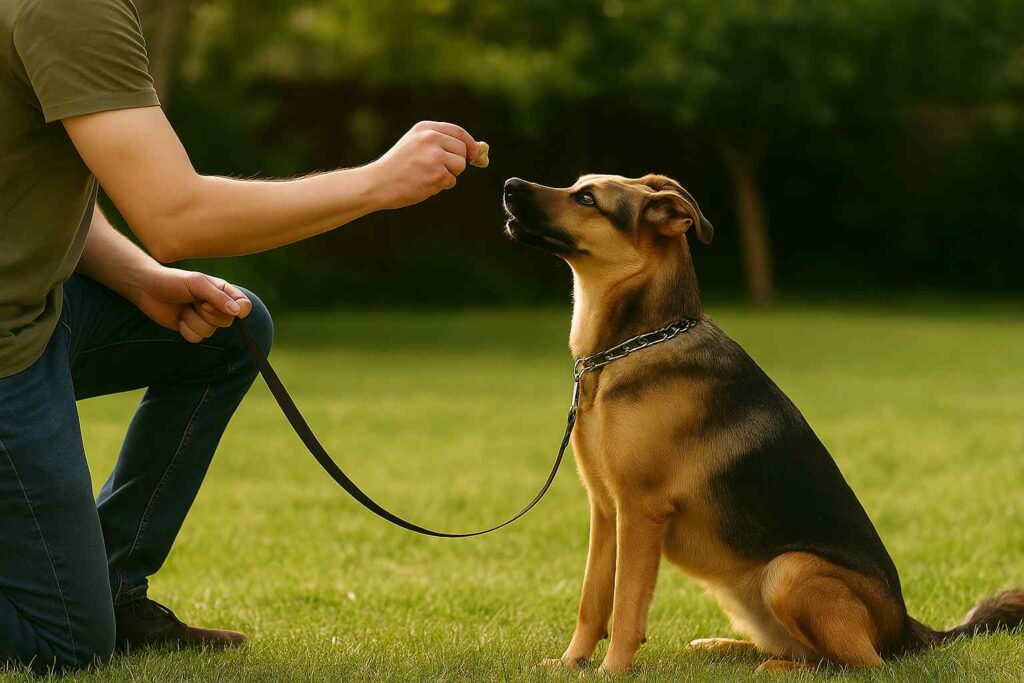Choosing the right dog collar for training can feel overwhelming, especially if you’re a first-time dog owner. With so many options, from flat collars to no-pull harnesses to prong collars, how do you know what’s safe, effective, and right for your pup?
In this guide, we’ll walk you through the best dog collars for training, break down the pros and cons of each type, and give you tips on how to choose the right one for your dog. Whether you have a tiny terrier or a giant German shepherd, this beginner’s guide will help you make a confident choice.
Why the Right Dog Training Collar Matters
A dog collar isn’t just a fashion statement. The right collar helps you communicate with your dog during training, keeps them safe, and makes walks more enjoyable. Using the wrong collar, on the other hand, can cause discomfort, confusion, or even harm.
Good Training Dog Collars:
- Offer gentle control
- Fit comfortably and securely
- Are durable and adjustable
- Match your dog’s size and temperament
Let’s take a closer look at your options.
Types of Dog Training Collars
Here’s a breakdown of the most common types of dog training collars used by pet owners and trainers.
1. Flat Collars
These are the standard collars most dogs wear every day. They’re simple, affordable, and come in countless colors and styles.
Best for: Dogs who don’t pull on the leash and just need a basic collar for ID tags.
Training tip: Flat collars don’t offer extra control for dogs who pull or lunge.
2. Martingale Collars
Martingale collars are also called “limited-slip collars.” They tighten slightly when your dog pulls, preventing them from slipping out without choking.
Best for: Dogs with narrow heads (like greyhounds) or dogs who are escape artists.
Safety tip: These collars should only be used during walks or training — not left unsupervised.
3. Head Collars (Head Halters)
A head collar fits over your dog’s nose and behind their ears. When they pull, their head turns gently toward you.
Best for: Strong pullers; large dogs who overpower their owners.
Consideration: Some dogs take time to get used to wearing a head collar. It’s not a muzzle — your dog can still pant, eat, and drink.
4. No-Pull Dog Harnesses
While not technically a collar, no-pull harnesses are popular alternatives for training leash manners. They reduce strain on your dog’s neck and discourage pulling.
Best for: Dogs learning leash manners; dogs prone to trachea injury (like pugs or Yorkies).
Tip: Choose a well-fitting, adjustable no-pull harness for comfort and effectiveness.
5. Prong Collars
Prong collars (or pinch collars) have metal links with blunt prongs that apply pressure when your dog pulls.
Best for: Last resort for strong, untrained dogs under the guidance of a professional trainer.
Important: These collars can be misused. Never use a prong collar without learning how to fit and use it properly.
6. E-Collars (Electronic or Shock Collars)
These collars deliver a vibration, beep, or static shock via remote control. Some trainers use them for off-leash training or serious behavior issues.
Best for: Advanced training with professional guidance.
Caution: Not recommended for beginners. Improper use can cause fear or aggression.
How to Choose the Best Dog Collar for Training?
When picking the best dog collar for training, consider:
Your dog’s size and breed
- Best dog collars for large dogs: Martingale collars, head collars, no-pull harnesses
- Best dog collars for small dogs: Flat collars, adjustable no-pull harnesses (to avoid neck strain)
Your dog’s age
- Best collar for puppy training: Lightweight flat collar or no-pull harness — avoid prong and e-collars for puppies.
Your training goals
- Leash manners? → Try a head collar or no-pull harness
- Prevent escaping? → Martingale collar
- Basic ID collar? → Flat collar
Temperament
- A sensitive dog may do better with gentle tools (head collar, harness)
- A confident puller may benefit from a no-pull collar or harness
Fit and comfort
Always check that the collar is adjustable, sits snug (but not tight), and allows room for two fingers between the collar and your dog’s neck.
Our Top Picks: Best Dog Collars for Training
Disclosure: This post contains affiliate links. As an Amazon Associate, I earn from qualifying purchases.
Here are some of the best dog collars for training, based on reviews and trainer recommendations:
| Collar | Best For | Key Features |
| PetSafe Gentle Leader Headcollar | Strong pullers | Padded nose loop, adjustable fit, prevents pulling |
| Country Brook Martingale Collar | Escape-prone dogs | No buckle slip design, soft nylon, lots of color choices |
| Ruffwear Front Range No-Pull Harness | All-around training | Padded, reflective trim, leash attachment on chest |
| Blueberry Pet Classic Flat Collar | Everyday use | Adjustable, durable nylon, comes in fun colors |
| Herm Sprenger Prong Collar | Experienced handler use | German stainless steel, smooth blunt prongs |
| PetSafe Easy Walk Harness | Beginners | Front leash clip, prevents pulling gently, adjustable |
(Note: Always consult a professional trainer before using prong or e-collars.)
Check out my full Amazon storefront for more recommended dog training products.
Dog Collar Safety Tips
✔ Fit matters – A collar that’s too loose can slip off; too tight can cause injury. The “two-finger rule” is a good guide.
✔ Check regularly – Dogs grow, lose weight, or gain weight. Make sure the collar still fits properly.
✔ Supervise certain collars – Martingales, prong collars, and head collars shouldn’t be left on when your dog is unsupervised.
✔ Replace worn-out collars – Frayed or damaged collars can break at the worst moment.
FAQs
Are prong collars safe for dog training?
Prong collars can be safe if used correctly and under the guidance of a trainer. They’re not for beginners, and misuse can harm your dog or damage your bond.
Can I use a training collar for a puppy?
For puppies, stick to flat collars or soft, adjustable no-pull harnesses. Focus on positive reinforcement and gentle training at this stage.
What’s the best dog training collar for pulling?
A head collar or no-pull harness is often the best choice for beginners dealing with pulling. They offer control without hurting your dog.
Final Thoughts
Training your dog is one of the most rewarding things you’ll do as a pet owner. Choosing the best dog collar for training is an important first step. Remember:
✅ Go for safety, comfort, and the right fit.
✅ Match the collar to your dog’s size, temperament, and training needs.
✅ When in doubt, ask a professional dog trainer for help.
With the right collar and a bit of patience, you’ll be well on your way to stress-free walks and a well-behaved pup. Happy training!




